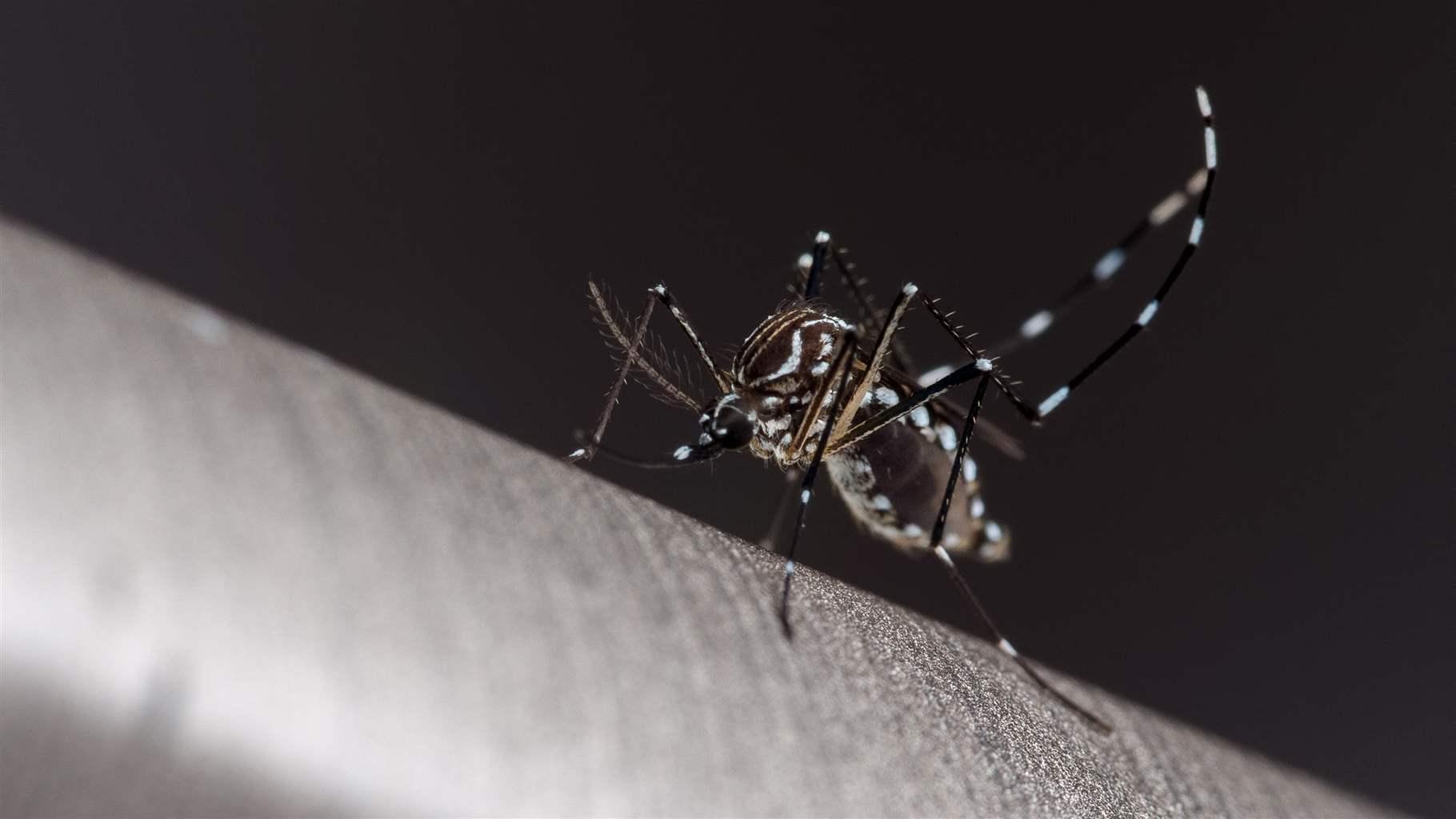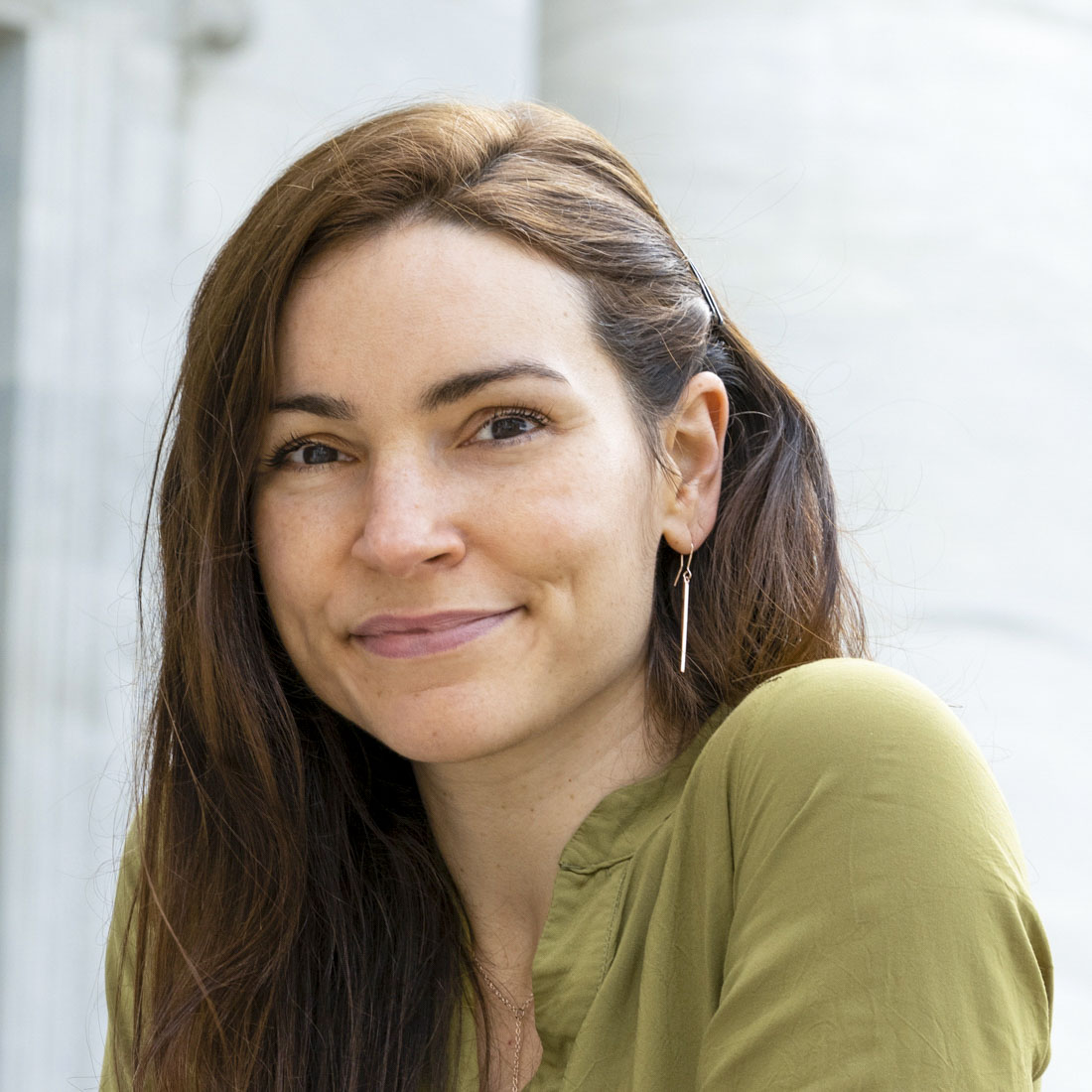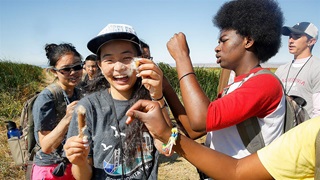Pew Scholars Seek to Unravel the Biology Behind the Mosquito’s Bite
Research could help to halt the spread of mosquito-borne illness

In Laura Duvall’s lab at Columbia University in New York City, it’s always summer, with the temperature set at a toasty 84 degrees. The biologist says walking into her climate-controlled laboratory is like entering “the worst day in August.” But for the tens of thousands of mosquitoes that live there, the humid conditions are just right. Special artificial feeders satisfy the insects’ thirst for blood, and pans full of stagnant pond water offer a murky environment perfect for growing larvae.
Mosquitoes are one of the most pervasive—and resilient—organisms on the planet. Dating back to the time of the dinosaurs, they have survived because of their extremely effective biology. Not only are mosquitoes an itchy inconvenience, but they also are experts at spreading disease, making illnesses such as malaria, Zika, and dengue difficult to eradicate.
Today, two Pew biomedical scholars are working to better understand how mosquitoes function and what can be done to reduce the risks to people. Using innovative approaches, 2021 scholar Duvall and 2023 scholar Josefina del Mármol are among the scientists uncovering the mechanisms behind what makes these blood feeders so persistent. Their findings could inform new avenues to halt the illnesses they spread.
Duvall, an assistant professor of biological sciences at Columbia, explained why mosquitoes are so successful at feasting on blood: Their survival as a species depends on it.
Female mosquitoes find their targets by synthesizing a vast collection of sensory information, such as human body odor, temperature, and carbon dioxide emission. And once they have their fill of blood, the insects use the nutrients to develop their eggs before seeking a mate.
“When they take this blood meal, it’s not like a slice of pizza or a snack. These females will double their body weight,” Duvall said. “And then they will completely turn off their appetite for days.”
Del Mármol, an assistant professor of biological chemistry and molecular pharmacology at Harvard Medical School, characterized mosquitoes as “human-sensing biological machines.” In her lab, she’s spearheading research to better understand their sense of smell.
To target a potential blood meal, del Mármol explained, the mosquito olfactory system—made up of three types of protein receptors—must sift through combinations of hundreds of small molecular odorants to find the correct target. That requires an incredibly sophisticated and strong sense of smell.
“The mosquito’s olfactory organs encounter millions of volatile molecules all the time as they fly, which means they have to detect human odors in a very complex sensory background,” del Mármol said. “This is exceedingly hard, and mosquitoes are exceedingly good at it. We want to understand how they do it.”
In the past, this robust olfactory system was a roadblock for scientists because of limitations in technology. But now, using cutting-edge tools, del Mármol and her team hope to fill in this knowledge gap while extending their research beyond mosquitoes.
“The structural underpinnings of the sense of smell remain obscure, not just in mosquitoes but in all organisms,” del Mármol said. “This lack of understanding is striking, considering how important the sense of smell is for most organisms, including humans.”
Both scholars study Aedes aegypti, the species known to spread dengue fever, chikungunya, and Zika, among other diseases. The World Health Organization estimates that this mosquito is behind an annual 96 million symptomatic cases and 40,000 deaths from dengue alone.
In her lab, del Mármol seeks to develop pharmacological tools that can be used to contain the spread of these diseases via mosquitoes’ sense of smell, potentially stopping the odorant attraction to humans so that the insects turn to other sources for their blood meal.
Meanwhile, Duvall and her team are researching the molecular and neural pathways that control mosquito mating and biting. She said these behaviors are innate—meaning that the biological functions are not learned or adaptable responses to the mosquito’s environment but, rather, fundamental to the insect’s biology.
Duvall’s lab will identify the neural pathways that regulate these behaviors. She and her team think they can block these pathways—using a sort of molecular “on/off” switch. This creative approach, which differs from del Mármol’s, could inform new methods for inhibiting the biting and mating behaviors that lead mosquitoes to transmit disease.
“If you can block mosquito-human interaction, then you can potentially block all the pathogens that she transmits,” Duvall said.
As science becomes more multidisciplinary, del Mármol, Duvall, and other investigators are able to tackle this problem from different angles. And although the field of mosquito research is still small, Duvall said she has seen an encouraging groundswell in recent years.
“This is also a really exciting time to be studying mosquitoes, because it’s not just our lab. There’s really a community of people who have invested in this research,” she said. “I think it’s really going to help us achieve liftoff and momentum that no single lab achieves.”
Kara Coleman is a project director and Donna Dang is a principal officer with The Pew Charitable Trusts’ biomedical programs.












